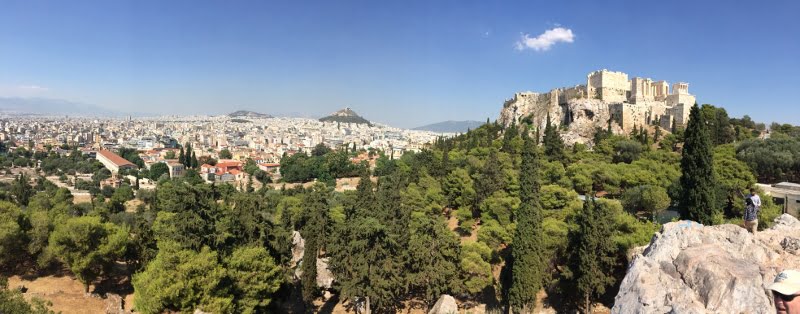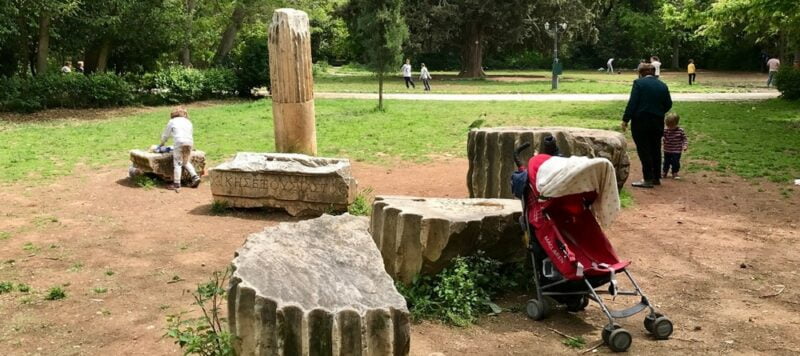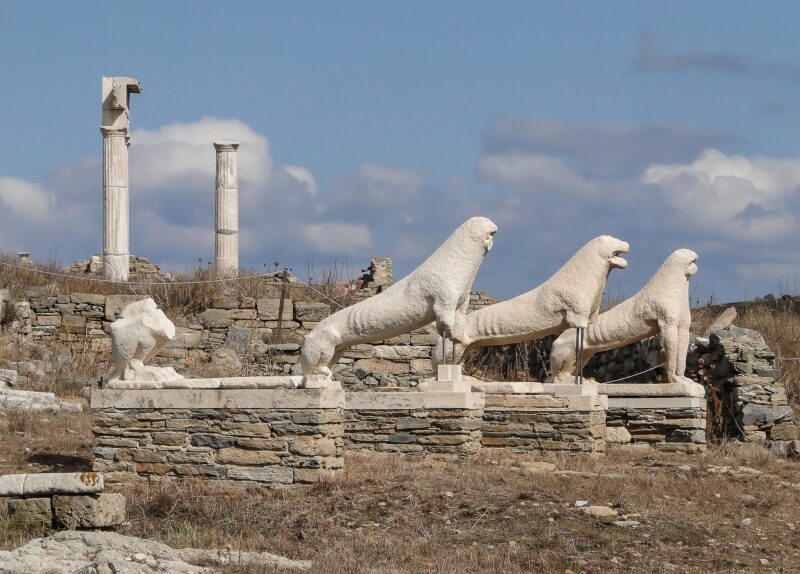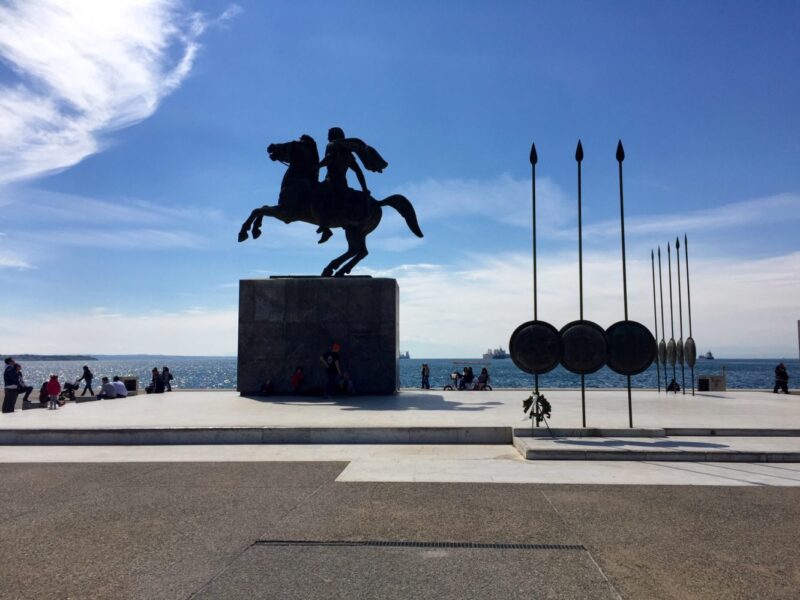Want to get away from the noisy streets of Plaka or Monastiraki? Whether you are a tourist or a resident of Athens, it is always a great pleasure to climb these hills of Filopappou (Philopappos), the Nymphs and the Pnyx. Not only do they offer an incredible view of the city and the Parthenon. But they are full of nice discoveries. The Athenians like to come and walk around, before finishing in a tavern and enjoying the lively neighborhoods of Monastiraki, Thissio and Psiri.
Filopappou, Nymphs and Pnyx: one of our favorite tours…
Here’s why we love it:
- Ideal for a family walk, because children love to discover the small paths and shortcuts as well as the “old stones” that line them.
- Shady and cool, although a good hat is needed at the top, as trees are scarce.
- In the heart of Athens, which allows you to alternate between walking, museums, restaurants and shopping.
- It is beautiful! And you’ll be surprised to see pictures worthy of the most beautiful postcards.
For more information, see also our tour ideas : for those who stay only few days in Athens.
To get to the hills of Filopappou and Pnyx
By car, we suggest you to park on the side of Rovertou Galli, Garivaldi streets. Because there are often places available. Otherwise, you can park in parking lot, there are several in Falirou and Dimitrakopoulou streets.
By metro, get off at Acropoli or Sigrou station.
Then on foot, go past the bus parking lot on Robertou Galli Street. And take the paved street, in the shade of the pines.
Before turning left to join the paths that lead to the top of the hill of Filopappou (Philopappos), stop at the small chapel of Agios Dimitrios Lombardiaris.
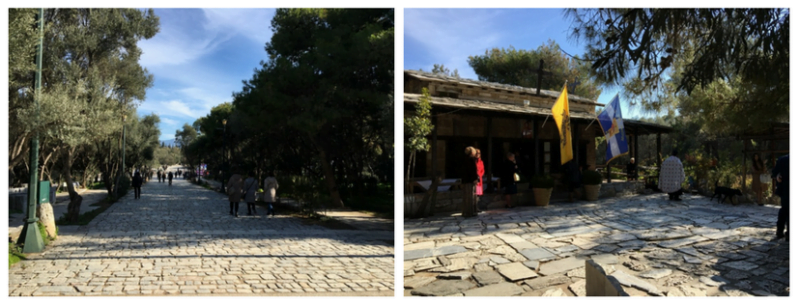
Agios Dimitrios Lombardiaris
This Byzantine church dates from 1656… and has a beautiful history. The Ottoman military governor did not want Agio Dimitriou (Saint Dimitri) to be celebrated. That’s why he threatened to bombard the faithful of the chapel with a cannon nicknamed Lombarda. He did not have the opportunity to do so because he was struck by a terrible bolt of lightning the day before the operation.
Today, the chapel is often the site of festive weddings and baptisms. Take the time to observe, it’s often a lot of fun.
On the way to the top
On the way to the monument of Filopappou, you will pass by recesses in the rock. According to the legend, they would have hosted the prison of Socrates.
The highest point is 147m. It is surmounted by a monument to the Roman consul Caius Julius Antiochus Philopappus, built after his death in 114 AD. The friezes surrounding the monument show his chariots arriving in Athens in the year 100. The place is also called the hill of the Muses because it housed the sanctuary of Muse (disciple of Orpheus), of which some ruins can still be seen.
A concrete column covered with tags has been erected at the top. It makes a superb pedestal for those who want to pose as a “caryatid” in front of the Acropolis.
Hill of the Nymphs
To go back down, we advise you to pass by the hill of the nymphs.
The place is even quieter. First, the paved paths pass by an ancient road (5th) that runs along a ravine. This one hosted the municipality of Koile, then the road continued to Piraeus. You will then reach a magnificent viewpoint, wilder and more arid, opening on the West of Athens.
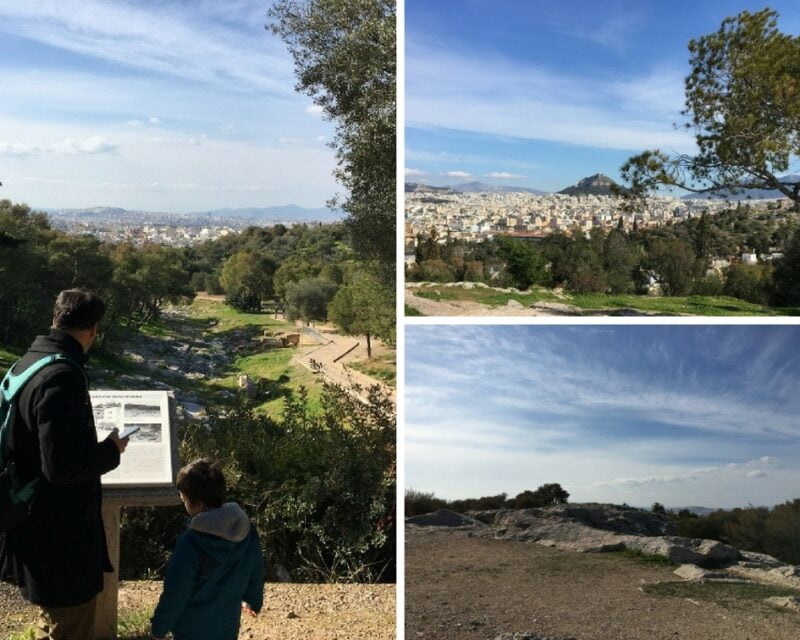
From there you can reach the old observatory. You will then discover the city on the north side with the Lycabettus and the Parthenon in the background. We suggest that you go down the sloping streets of Thissio, to find the liveliness of Thisiou Square, near the metro.
The hill of Pnyx
More touristic but also grandiose, you can finish your tour by the Pnyx hill. To return then to the large pedestrian walkway.
At the top of the hill, a natural amphitheater hosted, in the 5th and 4th centuries BC, the great citizen meetings. At that time, laws and policies of the city were discussed and everyone could express themselves. The ecclesia, this democratic assembly, met 40 times a year. It attracted thousands of people, but the quorum was set at 6000 citizens. Unfortunately, with the Roman domination, this assembly gradually disappeared.
As a great popular meeting of another kind, the place hosts in summer sound and light shows that illuminate the Acropolis.
Sophie B.
Updated on April 3, 2024
